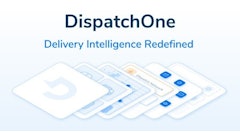
The concept of a distributed fulfillment network immediately clicks with most merchants when it comes to speed to delivery, but there’s often a disconnect when it comes to cost-justification. Most merchants’ knee-jerk reaction is that the increased inventory carry costs will be too cost-prohibitive to improving their service levels, but while it may seem counter-intuitive, the truth is that an upfront investment in stocking a distributed network will actually decrease overall cost to serve and generate demand from the bottom up.
When first presented with the idea of adding strategic warehouse locations, many merchants will begin to count up the added operational costs and upfront investment stocking additional warehouses. Their thoughts immediately jump to:
- Increased capital investment in inventory: Distributing inventory across multiple locations is not just a matter of spreading out existing assets. Each additional warehouse typically necessitates a 30% increase in inventory as an upfront investment.
- Additional inbounding costs: Obviously, inventory has to get from the supplier to the warehouse shelves somehow. There is an upfront cost of forwarding inventory to additional warehouse locations and labor costs for receiving and storing once it gets there.
- Higher storage costs: More inventory on the shelves will certainly mean more storage fees.
While these are real costs that may on the surface seem like a hindrance or pose a kind of perceived risk to margin-conscious merchants, it’s important to take a step back and take a more holistic look at unit economics, and specifically at shipment-level profitability.
The revenue implications of an optimized network are two-fold, with both top-line advantages and bottom line impacts, and the dollars saved on final mile delivery will more than offset the pennies spent on additional inventory carry costs. I’ll outline a few of the most notable top-line and bottom-line impacts of an optimized fulfillment network.
Top-line advantage: Increased sales
Higher service levels drive demand due to perceived value to the customer. In fact, a 2021 consumer survey revealed that:
- 69% of shoppers are more likely to click a banner ad that mentions fast and free shipping.
- 80% of shoppers are more likely to make a purchase from a brand that offers 2-day shipping.
Driving up top-line sales can expound growth, making an optimized fulfillment network an investment in future growth, rather than a cost center. We especially saw fast shipping as a competitive advantage during the 2021 holiday shopping season. 43% of consumers reported that they made a purchase from a new retailer while holiday shopping, and 23% reported they made the purchase because the merchant was offering fast shipping.
Top-line advantage: Lower cart abandonment rates
Shipping guarantees have been shown to improve cart conversions more effectively than incentives like a free gift or in-cart discount. In fact, 56% of merchants responded to Ware2Go’s 2020 survey that 2-day shipping guarantees improved their shopping cart conversion rates by up to 25%.
Top-line advantage: Higher average order value (AOV)
The promise of fast shipping entices shoppers to add more items to their cart. Not only do higher AOV’s increase top-line revenue, but also help to offset pick, pack, and ship costs, driving up the profitability of each sale.
Bottom-line impact: Lower time in transit (TnT)
The farther a package has to travel, the more expensive it is to get it there. Without strategically placed fulfillment centers as part of a distributed network, expanding into new geographic markets begins to eat into margins and ultimately hinders growth.
Adding even just one additional distribution center can dramatically decrease time in transit. For example, simply having distribution centers on both the east and west can decrease the average miles traveled per package from 1,000 to 45.
Bottom-line impact: Consolidated inbounding for multichannel merchants
Often merchants selling on multiple marketplaces and their own ecommerce site will have a patchwork fulfillment solution to meet the varying requirements of each sales channel. This can equate to time-consuming operational inefficiencies and negative impacts on bottom line revenue. Consolidating all fulfillment through a single network and technological platform frees up internal resources and cuts back on inbounding costs.
How aloha’s distributed network grew D2C sales
Aloha is a plant-based protein brand that, after six years primarily in the retail environment, decided to ramp up their D2C sales and did a complete overhaul of their website to support ecommerce sales. Their single distribution center fulfillment model had supported their regional retail sales and occasional D2C sales, but they quickly realized that they needed a fulfillment network that would support ecommerce sales at scale.
By expanding to a three-warehouse network they were able to offer their customers fast and free shipping through Aloha.com, and ultimately increased D2C sales by 250%. Their test into the ecommerce market was so successful that their digital sales now account for nearly 70% of their business, opening up a new market for them and diversifying their customer base.
Serving the right channels
Multichannel merchants understand that unit economics vary significantly by sales channel. While high-traffic marketplaces like Amazon may drive exposure and sales volume, the associated referral fees and ad spend result in lower profitability per shipment. However, by using Amazon to build brand awareness and drive traffic to more profitable channels like an ecommerce site, merchants can create a healthy ecommerce ecosystem that improves the bottom line.
Another aspect of sales channel profitability is the high expectations of marketplace programs like seller fulfilled prime (SFP). Amazon sellers all know that the Prime badge attracts loyal Amazon Prime members and makes them more likely to win the buy box. The general expectation is that listings with a Prime badge will sell 30% more than those without. However, it’s important to consider the margin on those sales rather than keeping a laser focus on volume. The demands of SFP, especially for standard sized products, may make Amazon fulfillment too pricey to offset with volume.
Hydrogen water brand HyVIDA found this to be the case for their Amazon channel and made the bold decision to drop the Prime badge and move to Fulfillment by Merchant (FBM). They continued to offer 1 to 2-day delivery to all of their customers, advertising their delivery promise the same way they would have advertised their Prime badge. Ultimately, most Prime shoppers are looking for free 2-day shipping more than they’re looking for certified Prime listings. In our recent consumer survey, 81% of Prime members reported that they are more likely or equally likely to purchase a non-Prime product as they are a Prime product.
HyVIDA’s Amazon sales actually increased when they focused their resources on optimizing their Amazon listings and advertising, and by including coupon codes for their ecommerce store in all of their Amazon shipments, and they began driving returning customers directly to their website -- doubling their ecommerce sales YoY. With the higher margins realized on their ecommerce shipments they were able to begin offering deeper discounts on bulk purchases, driving up the AOV and improving their unit economics even further.
The future of network optimization
As the logistics industry continues to evolve, the responsibility will be on fulfillment providers to ease the burden of change management for SMB’s to adopt a distributed network. Digital sales channels have leveraged technology and data to help merchants optimize their sales strategy, and now the logistics industry is doing the same.
With the help of machine learning, network optimization can be automated and businesses of any size can adopt enterprise level strategies in their supply chain. I look forward to the continued growth of the supply chain industry as we unlock the full potential of our data sets to solve issues from inventory planning to demand generation.
![Pros To Know 2026 [color]](https://img.sdcexec.com/mindful/acbm/workspaces/default/uploads/2025/08/prostoknow-2026-color.mduFvhpgMk.png?auto=format%2Ccompress&bg=fff&fill-color=fff&fit=fill&h=100&q=70&w=100)








![Pros To Know 2026 [color]](https://img.sdcexec.com/mindful/acbm/workspaces/default/uploads/2025/08/prostoknow-2026-color.mduFvhpgMk.png?ar=16%3A9&auto=format%2Ccompress&bg=fff&fill-color=fff&fit=fill&h=135&q=70&w=240)








